The Best Vegetables to Plant in Spring for a Summer Harvest
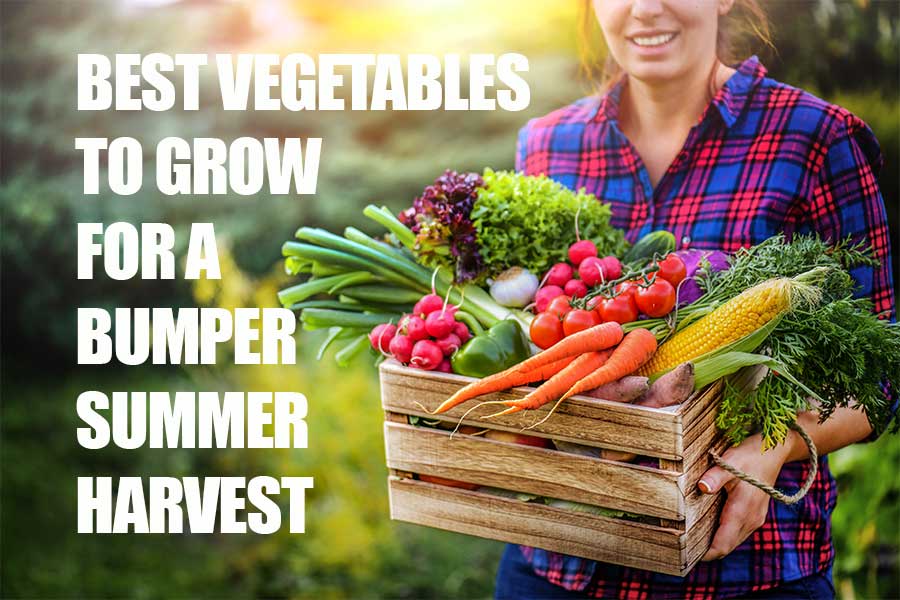
As daylight hours grow longer and the chill of winter fades, it’s time to start planting your spring vegetables! But remember, it’s important to select varieties that can withstand this season of mixed weather and variable temperatures. So, if you’re wondering which crops to choose, keep reading as we break down the best vegetables to plant in spring. Plus, we’ll be sharing some expert planting tips to give your summertime yield the best chance of success.
Which vegetables should I grow in spring?
Tomatoes
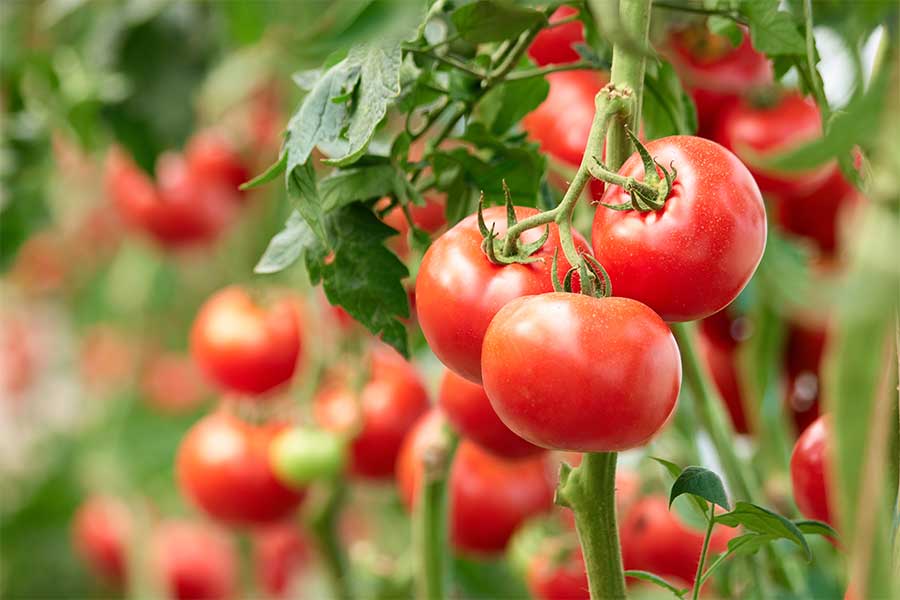
Tomatoes are a staple of summer gardens and thrive when planted in spring. Sow seeds indoors in March or April to keep them warm while they germinate. Then transfer the young plants outdoors in late spring once the risk of frost has passed. May is the ideal time as temperatures should be consistently mild by then with plenty of sunlight. Tomatoes also need rich soil and regular watering to produce juicy, flavourful fruits, so bear that in mind.
Popular spring varieties include Gardener’s Delight sweet cherry tomatoes and Roma plum tomatoes which are great for cooking. Or for salads, try Alicante and larger Beefsteak varieties. Just bear in mind that Beefsteaks grow best above 16°C, so plant them a little later.
Don’t have enough space for a vegetable patch in your garden? Opt for a handy grow bag instead such as the Westland Big Tom Tomato Planter just £7.99 or 2 for £14. This compact, self-contained planter will feed your tomato plants for 6 weeks to produce a greater harvest.
Lettuce
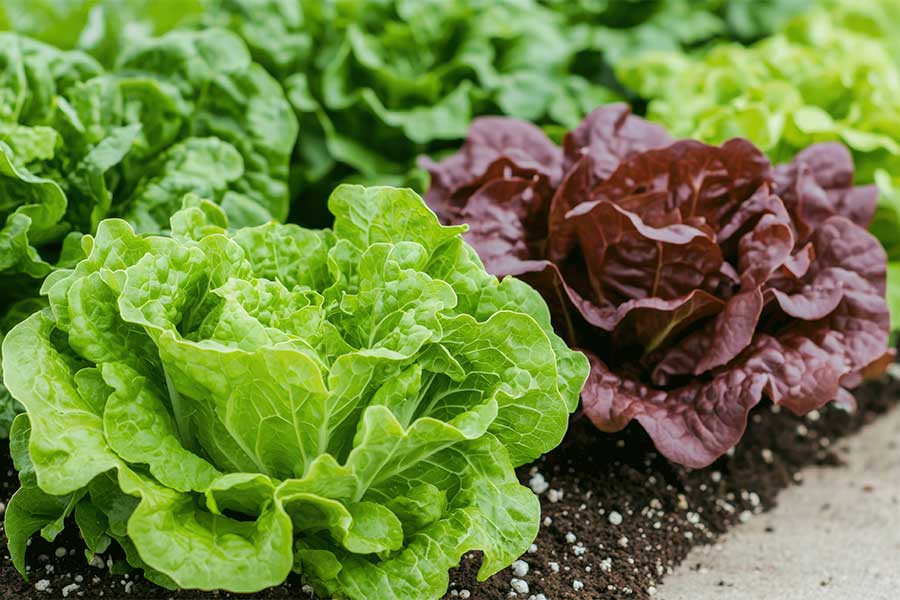
Lettuce and mixed salad leaves are also good vegetables to plant in spring. Popular varieties like Little Gem and Lollo Rosso are perfect for creating fresh, crisp salads in the summer.
These fast-growing greens like cool and moist conditions, and can be planted directly into soil provided ground temperatures are above 4°C. Once they reach around 7°C, your lettuce will grow quickly and typically reach maturity in around 40 days.
Cover the seeds with a thin layer of soil, burying them no more than 1cm deep, and keep the soil damp. Lettuce also likes plenty of sun, but doesn’t tolerate intense summer heat well, so spring planting is best. It may also be worth choosing a spot that provides afternoon shade.
Carrots
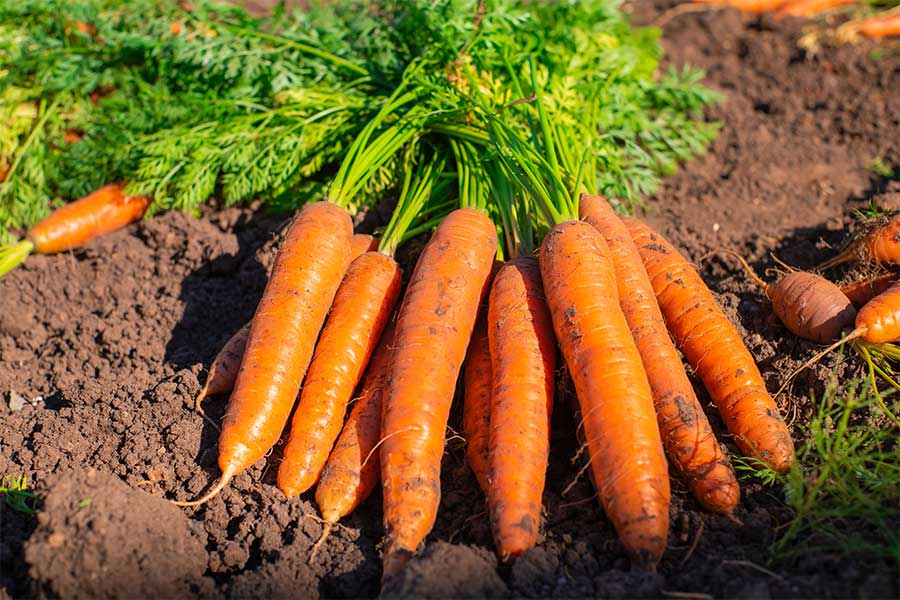
Carrots grow best in sunny locations with well-drained, sandy soil. We’d recommend planting them in April or May once soil temperatures warm up to around 13°C. But if you’re eager to get a head start, you could use a polytunnel to encourage early germination. Nantes and Chantenay carrots are especially well-suited to spring planting, and offer sweet, crunchy roots.
Carrots grow well alongside other root vegetables too, making them a good choice for companion planting. Just make sure they’re not too close together and that the soil is free from debris, otherwise they may become misshapen. It’s also a good idea to thin the plants out as they sprout to prevent overcrowding. And when it comes to watering, less is more. A good soak once a week should be enough to keep them healthy without encouraging rot.
If all goes well, your carrots should be ready to harvest in 12-16 weeks. Be sure to check them often as leaving them in the ground too long can impact their flavour – smaller means tastier!
Potatoes
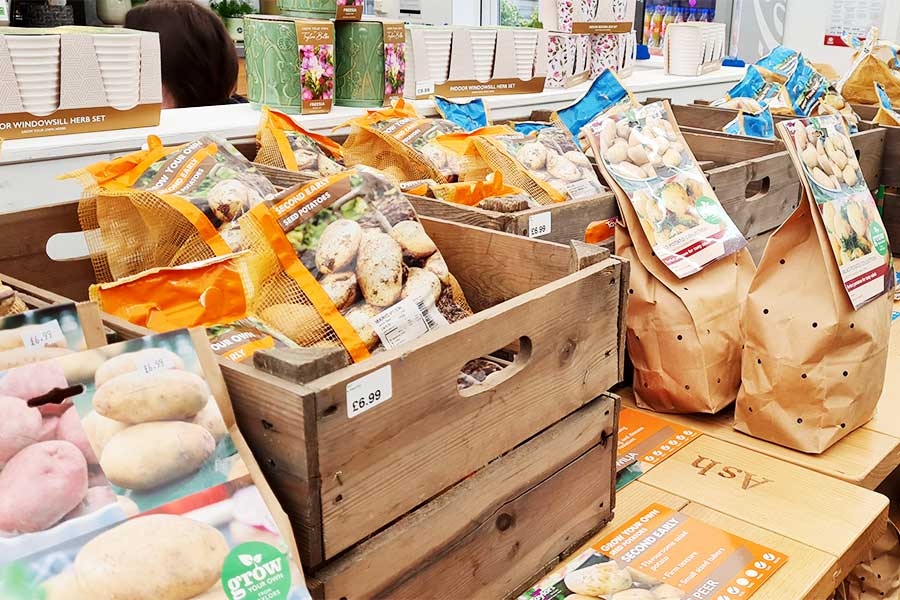
Potatoes are incredibly versatile and a fantastic choice for a summer harvest. Plant your seed potatoes in March or April in well-drained soil. Ensure the plants receive plenty of water and regularly earth up the soil around the stems to protect developing tubers from sunlight.
First Earlies will typically be ready for harvesting in June-July, Second Earlies in July-August, and maincrop varieties from August onwards. The following varieties by Taylors Bulbs are now in stock at Oxford Garden Centre:
- Heidi red
- Cammeo
- Caledonian Pearl
- Salad potato collection packs – including Charlotte, Nicola & Maris Piper
- King Edward
- Acoustic
- Rocket
- Pentland Javelin
- Casablanca
- Desiree (a good drought resistant potato)
Not sure which to go for? All of our potato seeds are colour coded for ease. First Earlies are blue, Second Earlies are orange and Maincrop potatoes are green. That way, you can narrow your search depending on when you plan to harvest them. First and Second Earlies will give you new potatoes in the summer, while Maincrops will give you tubers for eating in autumn.
Beetroot
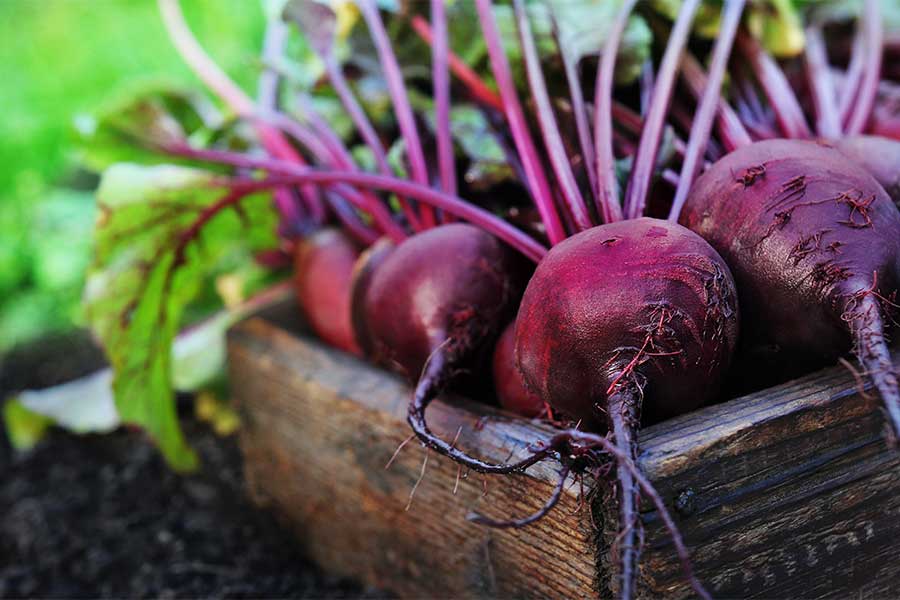
Beetroot consistently tops lists of the best vegetables to plant in spring here in the UK. In fact, it’s a pretty hardy plant that can be sown early than other varieties if you use a cloche. Or you can sow your beetroot seeds directly into your vegetable patch from mid-late March. Then continue planting in weekly batches until June to give you a steady supply for the summer.
To encourage growth, feed your plants with a nitrogen-rich fertiliser and water them regularly. Once the seedlings reach around 5cm tall, thin them out to give each plant enough space to grow properly. Around the 8 week, when the roots are about the size of a golf ball, they should be at their sweetest and ready to harvest.
Popular varieties include Boltardy, aptly named due to its resistance to bolting (flowering and becoming tough rather than developing sweet roots). Alternatively, Pablo F1 is a high-yielding option and Red Ace is known for its fast growth and smooth, tender beets. And don’t forget, beetroot leaves are also edible and make a tasty addition to salads!
Peas
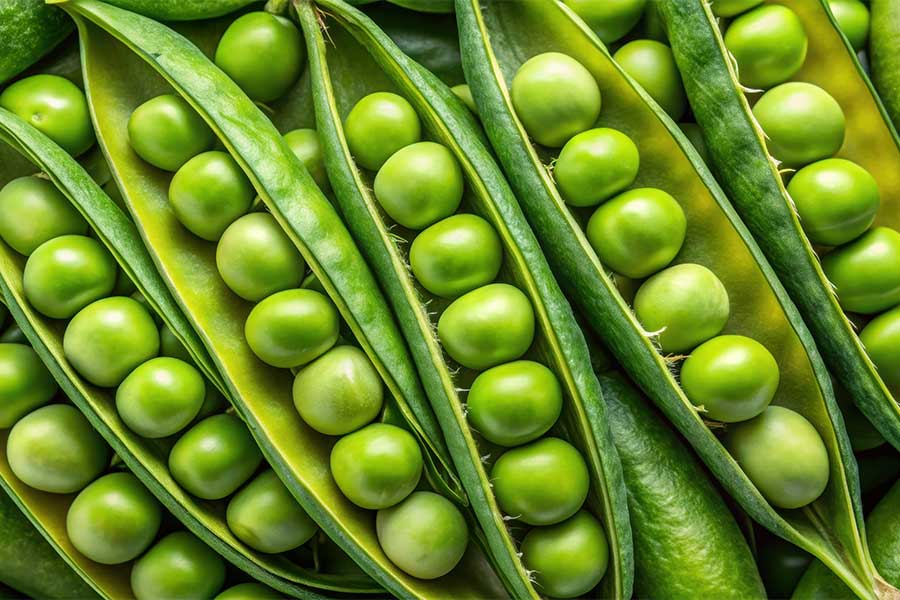
Peas thrive in cool conditions, making them one of the earliest vegetables you can sow. Plant seeds straight into the soil between March and May, as soon as the ground is workable. Opt for a sunny spot, sow the seeds in shallow trenches about 5 cm apart and keep the soil moist.
As they grow, your peas will need support, particularly if you choose climbing varieties like Alderman or Sugar Snap. You can use sticks, netting or trellises to encourage them grow upright. This also makes harvesting them easier and doing so regularly can increase their production too. Peas mature quickly and are usually ready to pick within 10 to 12 weeks.
Onions
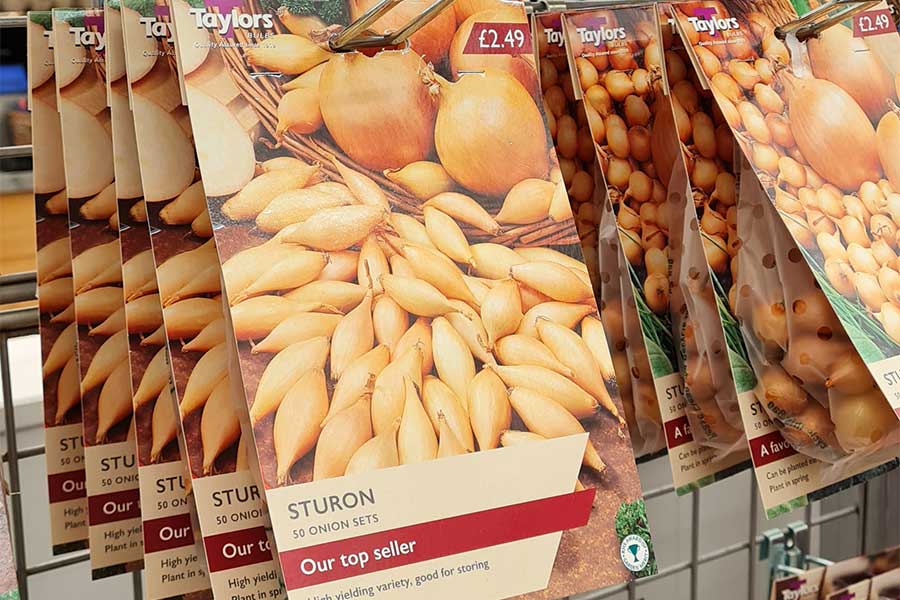
A reliable and low-maintenance crop, onions are undoubtedly one of the best vegetables to plant in spring. With that in mind, we’ve just stocked up on the following varieties:
- Sturon – shallots
- Longor – French “Banna” shallots
- Pink Panther – French pink onions
- Meloine – onions
- Red Baron – red onions (ideal for salads)
- Mixed onion packs
Plant your onion sets from March to April, in well-drained soil with good sun exposure and leave the top poking out. As the weather warms up to around 12°C, they will grow rapidly, with spring onions maturing in around 8 weeks.
Just be mindful of overwatering as this can lead to the bulbs become soft or even rotting. Instead, water them once a week during this period if there’s no rainfall to keep the soil moist.
More planting tips from our experts…
Prepare the soil
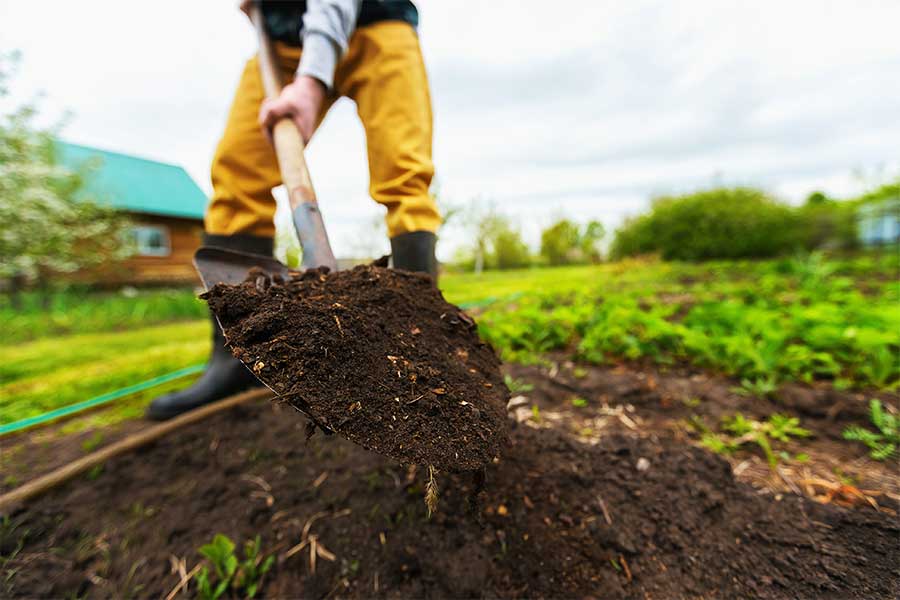
Ensuring your vegetable patch has nutrient-rich, well-drained soil before you sow seeds or plant bulbs is key. We stock several different composts, including Westland New Horizon All Veg Compost – £8.99 for 50L. As well as Woodland Mushroom Compost made with horse and poultry manure which is ideal for growing vegetables – now 5 bags for the price of 4!
Additionally, we’d recommend adding soil improver such as Westland Bio-Life 50L to your existing vegetable patch or raised beds in spring. This will replenish nutrients and improve the structure of the soil to aid growth. But don’t be caught out! Soil improver isn’t the same as compost. Compost adds fertiliser and feed, while soil improver replaces nutrients so you should be using both when planting veggies!
Otherwise, if you’re creating new beds, you can simply add in pre-mixed fertile soil. Rolawn’s Fruit & Veg Topsoil is a good option and comes in handy bulk bags for bigger projects.
Consider a water butt
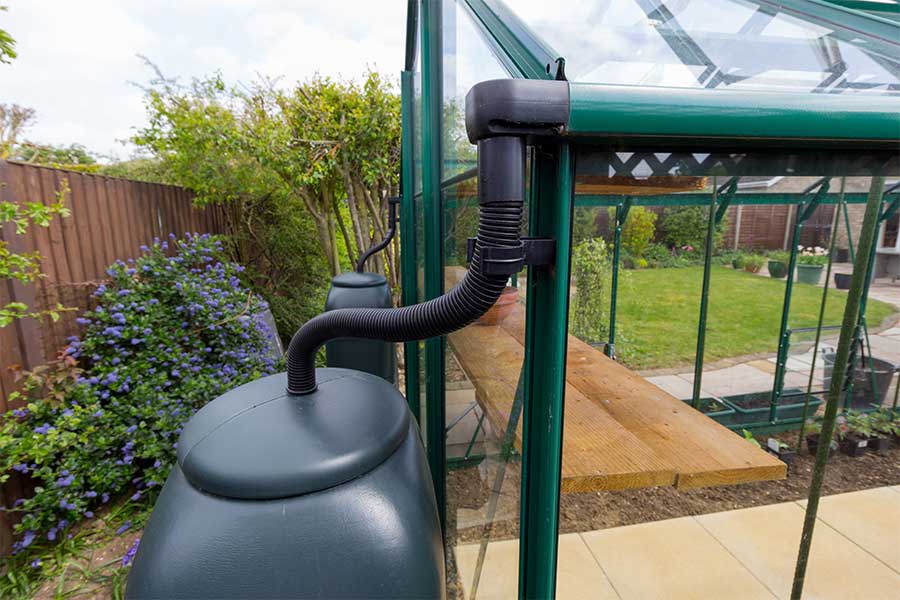
Installing a water butt for your vegetable patch is a great way to save money and be more eco-friendly. By collecting rainwater in spring, you’ll reduce your reliance on mains water later. That way, you’ll be able to keep your soil moist in dry spells – for free! Even if a hose pipe ban is imposed in your area during the summer.
Plus, water butts help to manage heavy rainfall by reducing runoff and surface flooding. It’s a win-win scenario! Read all about rainwater harvesting and installing a water butt on our blog.
Use mulch
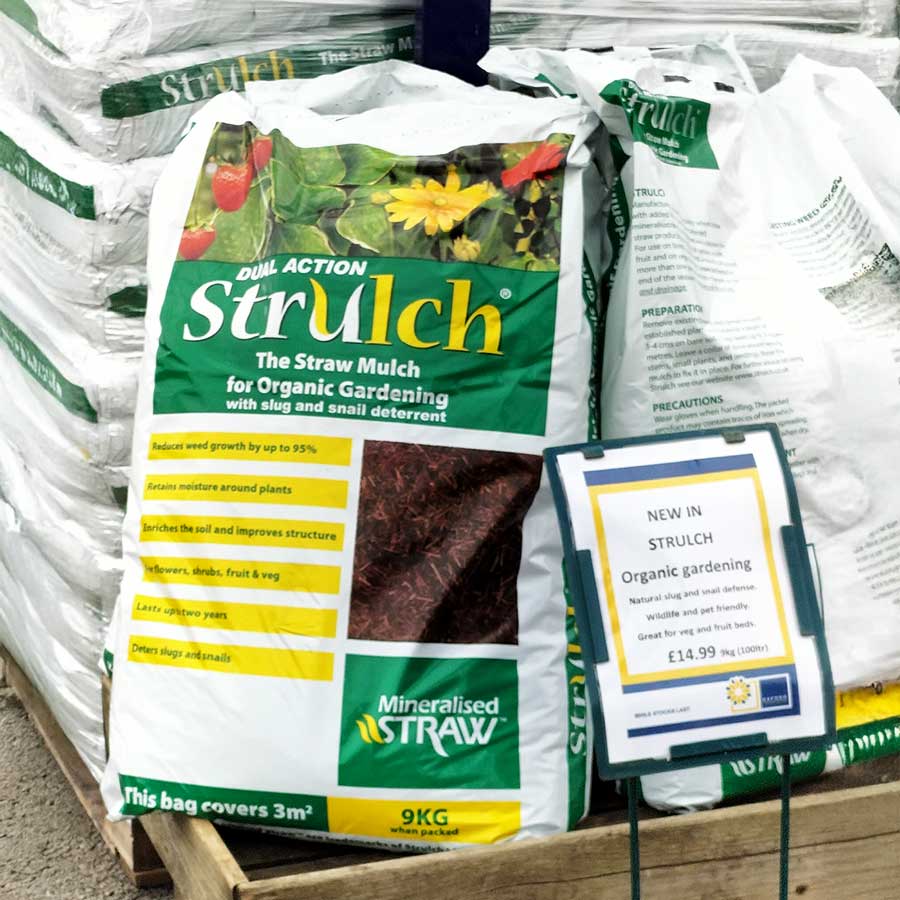
Mulching over bare soil in your vegetable patch can help to retain moisture and suppress weeds. As a result, you won’t need to water your plants as often or do as much maintenance to keep them healthy. What’s more, certain mulches have the added benefit of protecting your plants against veg-loving slugs and snails.
Strulch Organic Straw Mulch is a great example of this. This wheat straw-based mulch works to enrich the soil whilst also acting as a natural pesticide. Better yet, it lasts up to 2 years and costs just £14.99 for 9kg at Oxford Garden Centre, making us the cheapest local stockists!
Get your vegetables, growing essentials, and great advice at Oxford Garden Centre
Ready to get planting this March? Call in and see us for high-quality vegetable seeds, compost, mulch and more. Plus tailored gardening advice from our friendly horticultural team and absolutely Free local home delivery. We look forward to seeing you soon!
